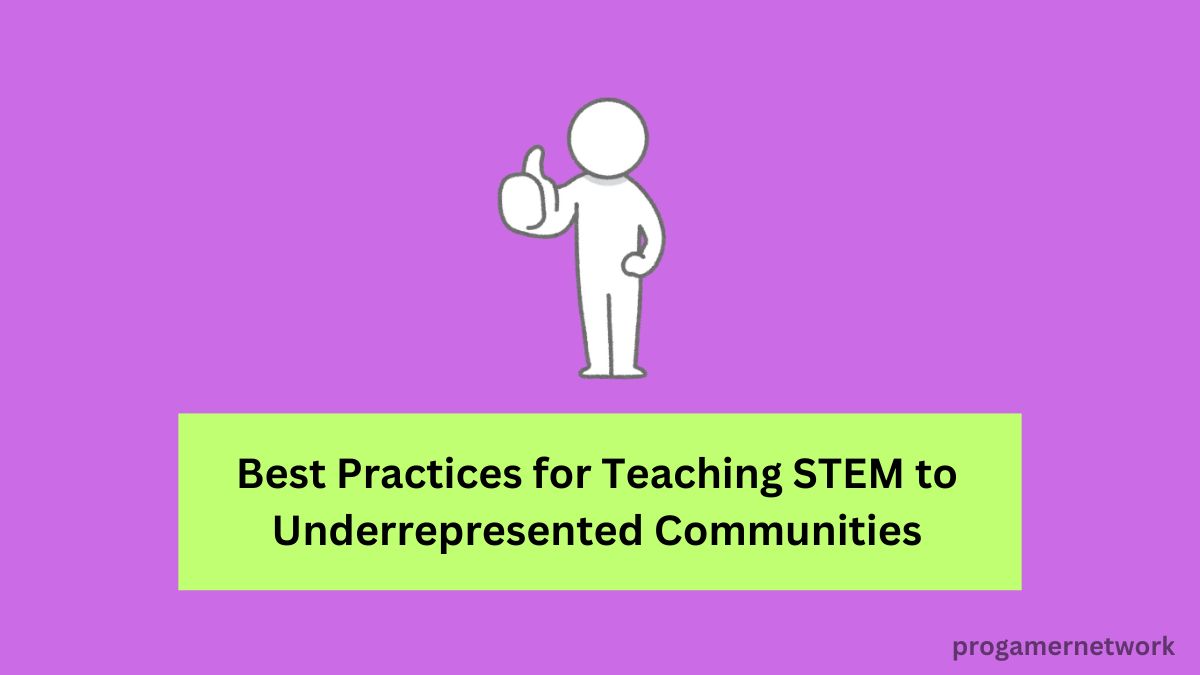Diversity in STEM (Science, Technology, Engineering, and Mathematics) is crucial for innovation and problem-solving. A variety of perspectives fosters creativity, leading to better solutions and advancements. Unfortunately, many underrepresented communities face barriers to accessing quality STEM education, which can limit their opportunities and contributions to these fields.
Understanding Underrepresented Communities in STEM
Underrepresented communities include groups historically marginalized in STEM fields, such as women, racial and ethnic minorities, and individuals from low-income backgrounds. Addressing the unique challenges faced by these groups is essential to building a more inclusive and equitable STEM landscape.
Creating an Inclusive Learning Environment
Culturally Relevant Curriculum
A curriculum that reflects the cultures and experiences of underrepresented students can significantly enhance engagement. Incorporating examples, problems, and role models relevant to their backgrounds helps students see themselves in STEM fields. This connection can spark interest and motivate them to pursue further studies.
Building Trust and Relationships
Establishing trust between educators and students is vital. Teachers should take the time to understand their students’ backgrounds, interests, and challenges. Creating a supportive environment where students feel valued and heard encourages participation and persistence in STEM subjects.
Addressing Implicit Bias in Teaching
Educators should be aware of their own biases and how these may affect their teaching. Providing training on implicit bias can help teachers recognize and mitigate any unintentional prejudices that may influence their interactions with students, ensuring that all students receive equal encouragement and support.
Engaging Students with Hands-On Learning
Project-Based Learning Approaches
Hands-on learning through project-based methods allows students to engage with STEM concepts actively. By working on real-world problems, students can see the relevance of what they are learning. For example, a project focused on environmental issues in their community can make STEM learning more impactful and relatable.
Community-Driven Projects
Involving students in community projects helps them connect STEM to their everyday lives. For instance, students could participate in local sustainability initiatives, where they apply their knowledge in tangible ways, enhancing both their skills and their community.
Utilizing Local Resources and Expertise
Leveraging local resources, such as businesses, universities, and community organizations, can provide students with access to tools and mentorship. Collaborations with local experts can enhance learning experiences, offering students insights into various STEM careers and applications.
Providing Access to Resources and Opportunities
Access to Technology and Tools
Ensuring that students have access to the necessary technology and tools is essential for effective STEM education. Schools should seek funding for resources such as computers, lab equipment, and software, ensuring that all students can participate fully in STEM activities.
Scholarships and Funding for STEM Programs
Creating scholarship opportunities specifically for underrepresented students can help reduce financial barriers to pursuing STEM education. Additionally, funding for after-school programs or summer camps focused on STEM can provide valuable learning experiences outside the classroom.
Partnerships with Local Organizations
Building partnerships with local organizations can enhance resources and support for STEM education. These partnerships can provide students with internship opportunities, workshops, and networking events that connect them with professionals in the field.
Encouraging Mentorship and Role Models
Connecting Students with STEM Professionals
Connecting students with mentors in STEM can inspire them and provide guidance on their educational paths. Organizing mentorship programs where professionals share their experiences can help students envision their futures in STEM careers.
Importance of Peer Mentoring
Peer mentoring can also be effective, allowing older students to support younger ones. This approach fosters a sense of community and belonging, encouraging students to pursue STEM subjects together.
Continuous Professional Development for Educators
Training on Cultural Competence
Educators should engage in ongoing professional development focused on cultural competence. This training can help teachers understand the unique challenges faced by their students and adapt their teaching methods accordingly.
Staying Current with STEM Trends
Keeping up with the latest trends in STEM education is crucial for effective teaching. Educators should participate in workshops, conferences, and online courses to stay informed and bring innovative practices into their classrooms.
Measuring Success and Impact
Gathering Data and Feedback
To evaluate the effectiveness of STEM programs in underrepresented communities, educators should gather data on student performance, engagement, and retention. Surveys and feedback sessions can provide valuable insights into what works and what needs improvement.
Celebrating Achievements
Recognizing and celebrating student achievements, both big and small, can motivate students to continue pursuing STEM. Highlighting success stories can inspire others in the community and show that STEM is accessible and achievable.
Conclusion
The Future of STEM Education in Diverse Communities
Implementing these best practices can help bridge the gap in STEM education for underrepresented communities. By fostering inclusive environments, engaging students with hands-on learning, and providing access to resources, we can create a more diverse and innovative future in STEM. It’s essential to continue advocating for equitable educational opportunities, ensuring that all students have the chance to thrive in these vital fields.
FAQs
How can we measure the effectiveness of STEM programs in underrepresented communities?
Effectiveness can be measured through student performance data, retention rates, and feedback from students and educators.
What are some examples of successful STEM initiatives?
Initiatives like STEM camps, mentorship programs, and community partnerships that engage students in real-world projects have shown success.
How can parents support their children’s interest in STEM?
Parents can encourage curiosity, provide resources, and engage in STEM-related activities together, fostering a supportive environment for exploration.
What role does technology play in teaching STEM?
Technology enhances learning experiences, provides access to resources, and prepares students for the tech-driven workforce.
How can educators address stereotypes in STEM fields?
Educators can challenge stereotypes by showcasing diverse role models, promoting inclusive curriculum materials, and fostering discussions around equity in STEM.

